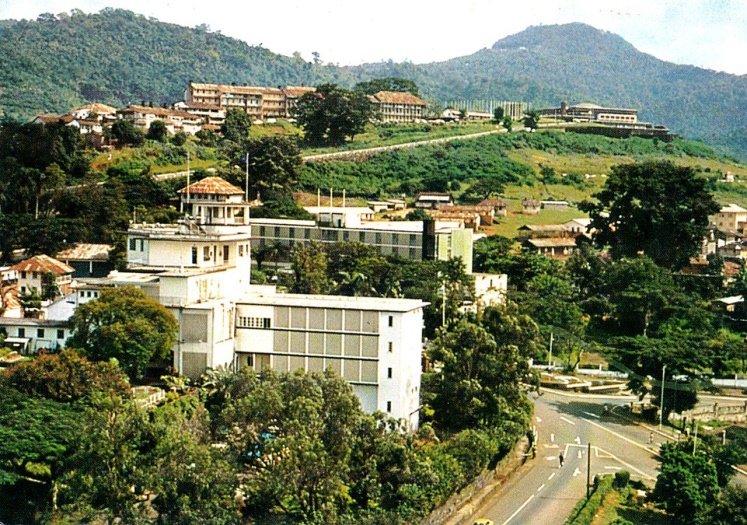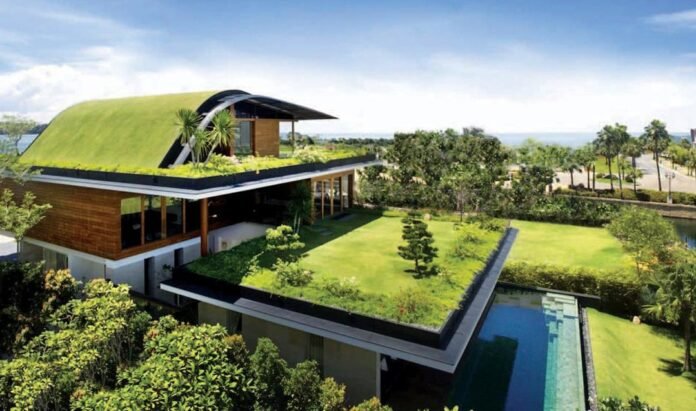For quite a long time Sierra Leone has been experiencing wide range of environmental issues and threats, because in order for the social, physical and economic transformation that we all seek there is a need for the environment be safe and cater for everyone in the most safest, reliable and effective manner. Green architecture has become a trending topic in today’s world due to the increasing concern for the environment. The stress on the environment has brought changes in air quality, soil erosion, water contamination and so much more. Being eco-friendly is becoming more and more common in today’s world, as people are becoming more aware of the importance of sustainable living.
The idea of green building is to ensure that use of currently available resources does not end up having detrimental effects to a future society’s well-being or making it impossible to obtain resources for other applications in the long run.
Sierra Leone has gone through a lot of environmental damages, the August 14 mudslide is a clear reflection and memory that is still fresh in the mind of so many, but these damages according to report from environmental specialists is mainly by human actions that rendered the environment in total demise and even complete danger for our well-being.
But Green Architectures can totally end this massive wreckage by creating reforms that even when human acidities affect the land it will have a very limited effect. Green architecture counteracts the impact of humankind by creating more sustainable ways for us to live on this planet. This type of architecture does not mean abandoning all the creature comforts we enjoy in the 21st century. It means embracing new technologies that have become more and more accessible
Green architecture may sound new, but it has always been among us. Historically, it was necessary for survival. Easy examples of this are cracking windows to catch a breeze to cool off interior spaces in the summer, or building structures that capitalize on collecting natural light.
Freetown, the capital of Sierra Leone is among the vulnerable countries to climate change, and economic sectors and livelihoods are already frequently experiencing the manifestations of the impacts. According to the science of climate change, these impacts are likely to continue to affect Sierra Leone in the future, despite the country being least responsible for the problem since Sierra Leone’s contribution to global emissions of greenhouse gases is negligible. Sierra Leone’s Vision for 2013 to 2035 is to become a middle-income country.
It would be an inclusive, green country, with 80% of the population above the poverty line. It would have gender equality, a well-educated, healthy population, good governance and rule of law, well-developed infrastructure, macroeconomic stability, with private-sector, export-led growth generating wide employment opportunities; there would be good environmental protection, and responsible natural resource exploitation.
The Sierra Leone National Development Plan –the Agenda for Prosperity 2013 -2018 indicates that Sierra Leone is committed to mainstreaming inclusive green growth in her development process. Thus, the development of the National Climate Change Strategy and Action Plan is timely and will support the transition to low-emission development involving decoupling carbon emissions from economic growth through a series of measures across all economic sectors (EPA 2021)
Additionally, Green Architecture can also not beautify the country but can have a cultural impact. Green Architecture in Freetown tends to beautify the country in upholding it cultures of being a natural habitation with the symbol of trees and as well protects citizens from the direct radiation of the sun, this practice is also important for the environment as it capacitates the social and cultural impact of society in all strides. Green Architecture is important for all classes in society as it practice help everyone to spend less and create building that cannot impact the environment negatively.
Economically this is a total benefit for the society. In Freetown the practice of Green Architecture is not common, but this article will largely help to raise awareness on how to involve in green housing infrastructures and help improve the cultural and social impacts in Freetown, an integrated green infrastructure network can provide many benefits to a community including, improved health and well-being, reduced flooding and the creation of new habitat for wildlife in Freetown.
Architects are best suited to solve the problems and challenges we face if we’re serious about an equitable future. But we need to design the policy frameworks in which we build—the only way we can make substantial changes is at the policy level.
So it is no surprise that architecture and culture are intertwined since time immemorial. As philosopher Edward S. Casey wrote, “The very word culture meant ‘place tilled’ in Middle English, and the same word goes back to Latin colere, ‘to inhabit, care for, till, worship’ and cultus, ‘A cult, especially a religious one.’ To be culturally oriented, to have a culture, is to inhabit a place sufficiently intensely to cultivate it—to be responsible for it, to respond to it, to attend to it caringly.”
Global warming has been a growing concern for a number of years, and it’s no wonder – our planet has seen a drastic depletion of our natural resources, while pollution and the consequent climate-change is at an all-time high. Sustainable architecture is not only energy-efficient and healthier for its inhabitants, but it also benefits the planet. By reducing our reliance on non-renewable resources (fossil fuels such as coal and oil), green architecture can actually promote and maintain a cleaner environment.
The world is constantly evolving and reaching new heights every single day. The demand for green sustainable buildings has never been higher as the stress on the environment is depleting many of our natural resources. Overpopulation is a major concern; green building can ensure that sustainable homes are a better option as it can impact the global economic markets. A part of green architecture is quite similar in visuals to traditional buildings, except that traditional buildings negatively impact the surrounding environment.
Keep in mind that there has been advancement in technology in every area of life. And without a doubt, there are technologies available that complement this green practice. Green architecture or sustainable buildings are necessary as they reduce the use of water, energy, and other resources. This also reduces the waste produced while constructing these buildings, reducing pollution and improving a person’s overall health. The time for green Building’s in Sierra Leone is now, if we really care about our safety and the environment that we all breed in.


